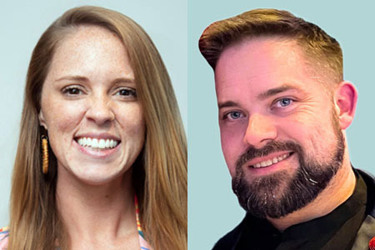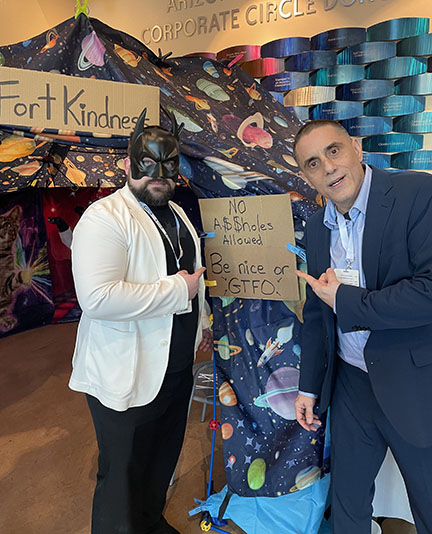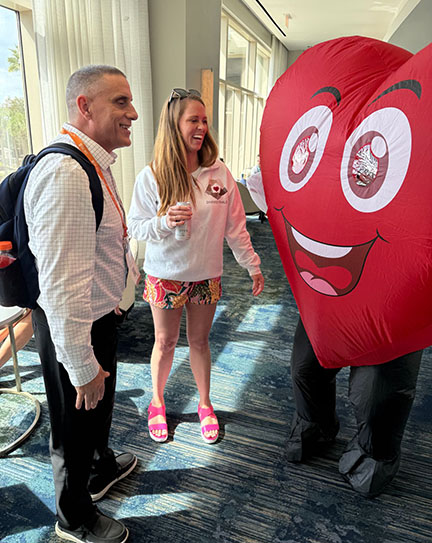Inside A Micro-CRO's Evolution

By Dan Schell, Chief Editor, Clinical Leader

The clinical research outsourcing landscape isn’t exactly known for being easy to break into. A handful of global CROs dominate the market, and a cluster of midsize players crowd the space below them. Yet lately, a quieter movement has been building — one where a few seasoned clinical operations pros decide they don’t need massive infrastructure, just experience, reputation, and the right network.
That’s the bet Mitch Hilbe and Jess Thompson are making with their newly launched CRO, DiversiTrials. I’ve known both of them for a few years, and when I sat down with Mitch at the recent SCRS conference, I wanted to understand what it takes to build a CRO from scratch in 2025 — and whether this “small-but-mighty” model really has legs.
Building A CRO Without Owning Everything
Hilbe was actually one of the first people I met in person when I started covering the clinical trials industry a few years ago. I was at the inaugural Save Our Sites (SOS) conference, and Hilbe, wearing a white sport coat (I remember this detail because he stood out in the crowd), struck up a conversation with me. When he realized I was a “newbie,” he quickly started introducing me to people at the conference.
At the time, Hilbe was far from being the founder of a CRO. This even pre-dated DiversiTrials, which he cofounded (with Dr. Daniel Fox and Dr. Hadi Danawi) as a consulting agency helping sites, sponsors, and CROs improve inclusion and diversity in research. When the decision was made to transition the company into a CRO, Fox and Danawi left, and Thompson came on board. “Given my background in ClinOps, most of the work that came our way ended up being operations-focused,” he explained. “It was a natural progression. We were already doing consulting on clinical operations, so why not expand to offer full-service support?”
That expansion now includes vendor management, pharmacovigilance oversight, and feasibility and site-selection services — the typical CRO menu, minus the heavy overhead. Like most new micro-CROs, DiversiTrials contracts out much of its monitoring and data work. Of course, even large CROs do that. Hilbe also readily admits that as a CRO with only a few employees, you can’t handle everything, but you can design the quality infrastructure and partnerships that make it all work.
He and Thompson spent months quietly building that infrastructure before going public this fall. “People see you as consultants and wonder how you suddenly became a CRO. But we’d been building the backend — the reporting processes, RFP templates, and quality controls — long before the launch.”

Mitch and Dan at SOS 2024
Agility Over Size
If you listen to the big CROs, you’ll hear a lot about “site-centricity,” “transparency,” and “partnership.” Hilbe’s aware of that. “Everybody says they’re site-centric, but it doesn’t mean they are,” he said with a grin. For DiversiTrials, the pitch is more pragmatic: smaller CROs can pivot faster, give sponsors more direct access to leadership, and often deliver with less bureaucracy.
That same agility is part of what drew Tina Karunaratne, founder of Karuna Integrated Clinical Services, into the small-CRO space. Like Hilbe, she comes from a background in clinical operations and built her firm on contract partnerships rather than employees. The two already know each other — Karunaratne has served on the inclusion advisory board for DiversiTrials — and they see cooperation, not competition, as the way forward.
“There’s no competitive nature whatsoever,” said Hilbe. “We help each other. Maybe she needs monitoring support, or we need European trial coverage. It’s symbiotic.”
That word — symbiotic — comes up a lot with Hilbe. He uses it to describe relationships with other companies like Delve Health, which focuses on wearables and decentralized study tech, but also, according to Hilbe, can act as a micro-CRO. “Why compete when you can complement?” he said. “If another CRO is stronger in a certain therapeutic area or technology, I’d rather defer to them. It makes everyone’s job easier.”
Is This “Small But Specialized” Ecosystem Growing?
I couldn’t find one defining statistic or research report that stated — or even insinuated — that this micro-CRO model built with minimal staff and maximum outsourcing is becoming more common. Sure, there are plenty of stats about the number of CROs out there with less than 500 employees (one report estimates that these represent 92% of the total number of CROs globally), but even those companies are huge compared to what Hilbe and Thompson have built — thus far.
What makes this model feasible now are the same tools transforming other industries: cloud-based EDC platforms, on-demand biometrics labs, virtual QA networks, and freelance CRAs who prefer contract work over full-time employment. As long as founders bring the experience, they can rent the rest. The barrier to entry used to be infrastructure, but today, it seems the barrier is more about credibility. If you’ve been a trusted ClinOps leader with a lot of industry connections, you may be able assemble a — should I be calling it a “virtual”? — CRO in a couple of months.

At 2025 SCRS with Mitch in the heart costume
Hilbe doesn’t dispute that. “It’s not easy, but you don’t need 1,000 employees,” he said. “You need to know where to find great CRAs, and how to manage them.” He also believes being therapeutically agnostic helps. “Monitoring is monitoring,” he said. The principles don’t change depending on the indication. He said the key is finding staff with depth in one area but the ability to stretch into others.
Holding On To The Diversity Focus
While DiversiTrials now positions itself as a full-service CRO, its roots in inclusive research remain front and center. For example, they still push for granular race and ethnicity data in the studies they manage and with the sites they choose. “When sites apply through our web form, we don’t just look at capabilities — we want to know how they’re engaging with their communities,” Hilbe said. “We collect demographic data, PI information, and look at how they’re reaching under-represented populations.”
It’s an ethos that connects back to the diversity action plans (DAPs) that have been proposed for many U.S. trials. “Sponsors sometimes think diverse recruitment costs more. What really costs more is not knowing how to engage people or failing to plan for it.”
What Comes Next For The Small CROs
Whether this new generation of micro-CROs evolves into something like the site-network consolidation we’ve seen during the past few years remains to be seen. But there are examples of an ecosystem forming — smaller CROs, niche vendors, consultants — all playing off each other.
Hilbe said he’s content to keep growing at a measured pace. “We’ve already got hundreds of sites in our network,” he said. “We’re being intentional about relationships. I don’t want to lose that by scaling too fast.”
In an industry where the giants chase scale, it’s refreshing to see people betting on relationships instead. The idea that experience itself can be infrastructure might just redefine what a CRO looks like in the years ahead.
